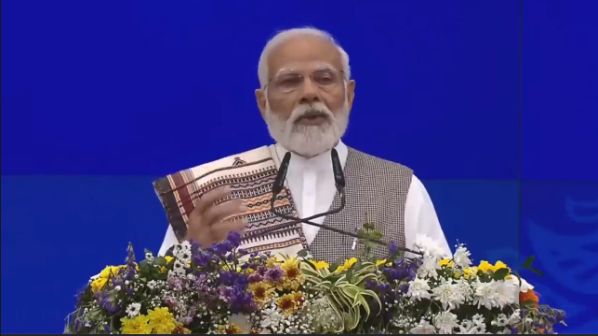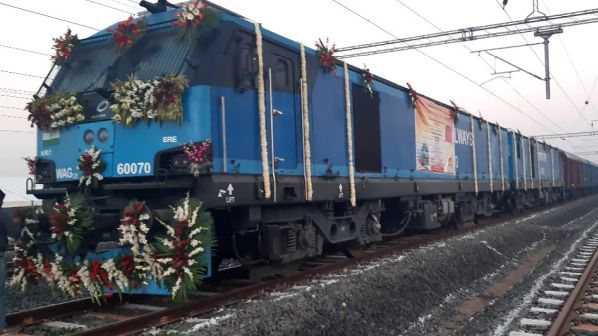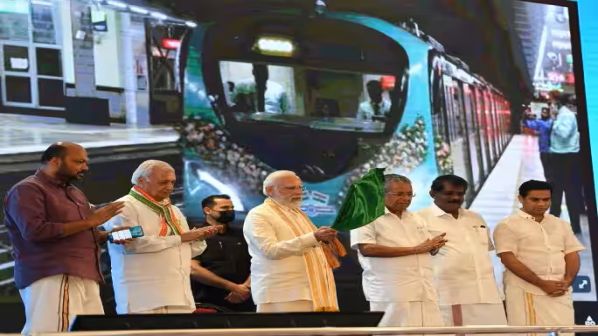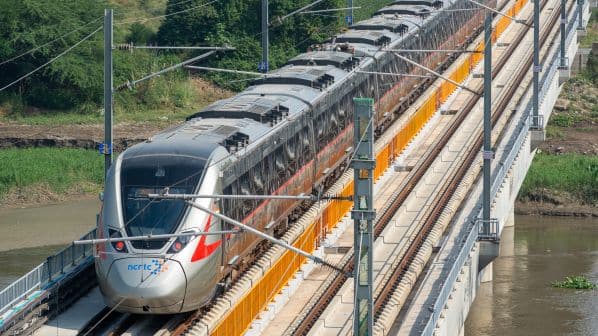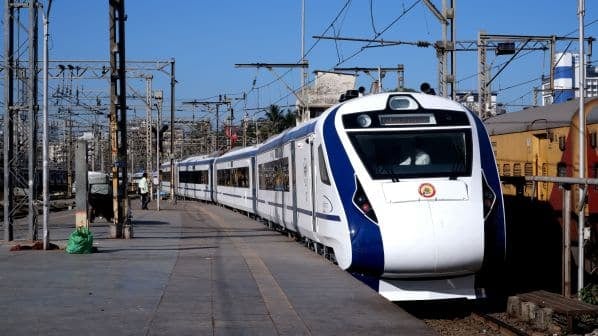INDIA’s prime minister, Mr Narendra Modi, opened or formally marked the start of work on rail projects worth a combined Rs 850bn ($US 10.6bn) on March 12.
This included two new sections of the Dedicated Freight Corridors (DFC) network: the 401km New Khurja - Sahnewal section of the Eastern DFC (EDFC) and the 244km New Makarpura - New Gholvad stretch of the Western DFC (WDFC).
Modi flagged off freight trains at New Khurja junction, Sahnewal, New Rewari, New Kishangarh, New Gholvad and New Makarpura. He also launched the operation of Vande Bharat EMUs on 10 new and four extended routes.
The prime minister laid the foundation stone at several new workshops and depots, and announced a project to upgrade the traction power supply system on the Phaltan - Baramati line in Maharashtra state. He also opened 51 Gati Shakti intermodal terminals, which have been built with the support of the private sector.
The combined 2843km Eastern and Western DFCs have cost an estimated Rs 1.24 trillion to build. While construction of the 1337km EDFC is complete, around 14% of work remains on the 1506km WDFC, a project funded by the Japanese International Cooperation Agency (Jica). Specifically, the 109km Vaitarna - Mumbai section, which is now targeted for completion by 2025.
Indian Railways (IR) carries 52% of its freight traffic on the Golden Quadrilateral routes connecting Delhi with Mumbai in the west and to Howrah in the east, which make up 16% of its total network. IR is committed to transferring 70% of its freight traffic to the DFCs, which run parallel to these main lines.
Approximately 250 freight trains are currently operating daily on the completed sections of the two DFCs, accounting for 304 million gross tonne-km. “In five years’, the DFCs will transport at least double this traffic,” says a senior official at the Dedicated Freight Corridor Corporation of India (DFCCI).
While the projects were delayed during the initial stages of development - they were first proposed as long ago as 2006 - rapid progress has been made in recent years. “After the completion of the first section of 321km in 2020, 2418km of track has been built in the last three years,” the official says.
DFC trains operate at an average speed of 55km/h, which compares with 22km/h on the IR mainline network. They will ultimately operate at up to 100km/h. “The safety infrastructure work has not been fully completed, hence the trains are running below the design speed,” the official says. “However, these tasks will be completed shortly.”
The EDFC is mainly intended for coal transport while the WDFC is predominantly carrying intermodal traffic. Both new lines are designed for 25-tonne axleloads, supporting operation of trains weighing up to 13,000 tonnes. Bridges and the formation are designed for a maximum axleload of 32.5 tonnes.
In line with the Gati Shakti intermodal terminals policy, DFCCI is inviting requests for participation (RFP) from private-sector companies to build new terminals in Rewari, New Gorakhi, New Daud Khan and New Marwa.
For detailed data on Indian railway projects, subscribe to IRJ Pro.
